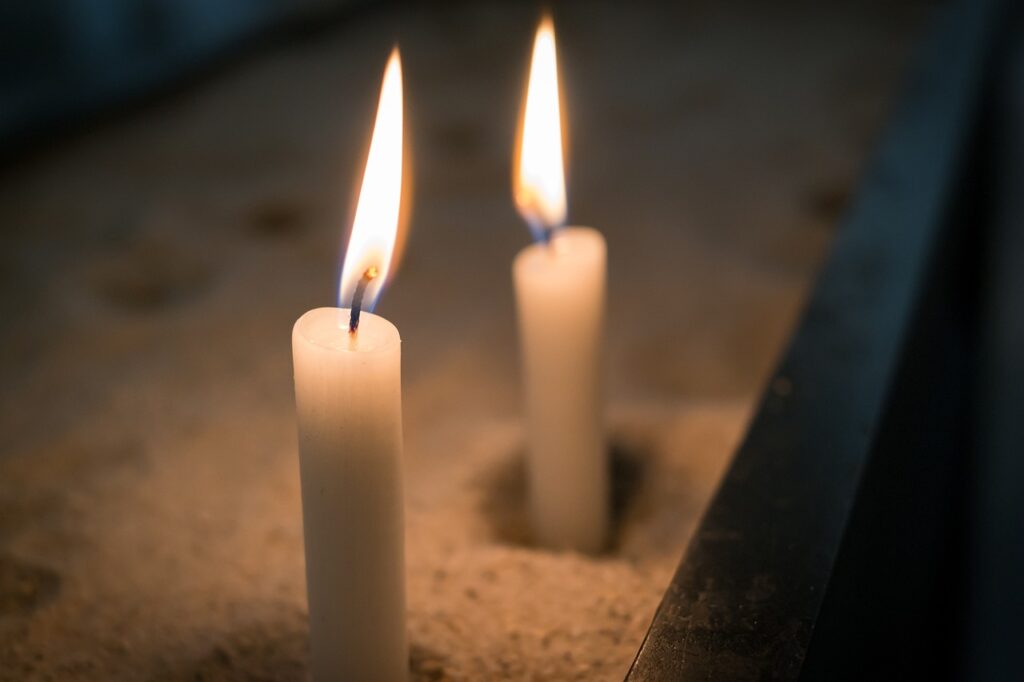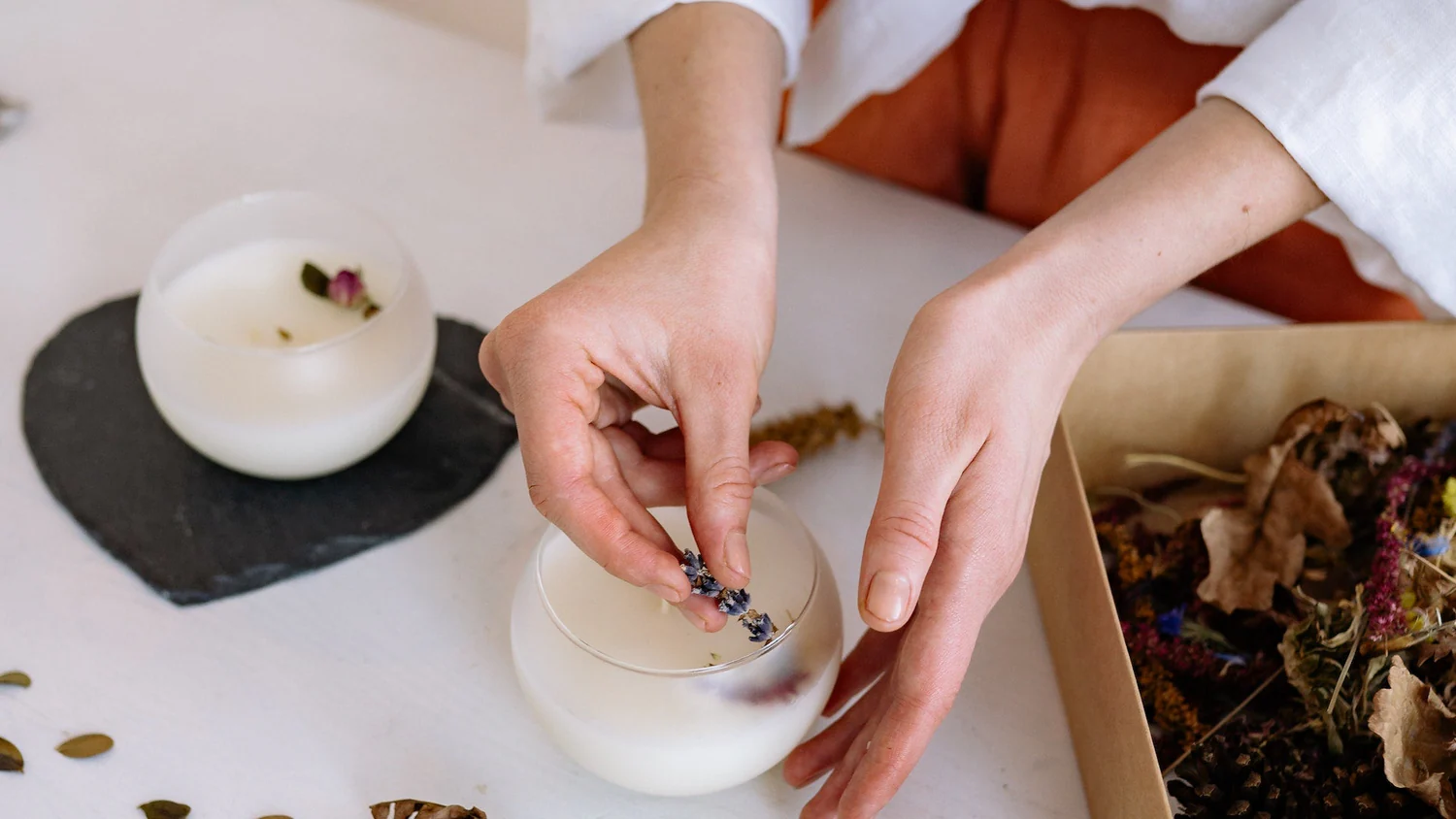Candle wicks are an essential component of any candle, playing a significant role in the burning process. Understanding the basics of candle wicks will help you create candles that burn evenly and efficiently. In this step-by-step guide, we will explore the different types of wicks, gather the necessary materials, and walk you through the process of making your own candle wick.
Understanding the Basics of Candle Wicks
Before diving into the process of making a candle wick, it’s important to understand the role it plays in a candle. The wick acts as a conduit, drawing the liquid wax up from the candle’s pool and vaporizing it, creating the flame. This controlled burn is what provides light and fragrance.
Now that you have gathered your materials and prepared the wick, it’s time to dive into the process of how to make a candle wick.
The Role of a Wick in a Candle
A wick’s main function is to deliver the fuel, which is melted wax, to the flame. It must be able to absorb and hold the right amount of liquid wax, so it can be effectively burned. The size and material of the wick are crucial in achieving a desirable burn rate and preventing issues like excessive smoking or tunneling in the candle.
But did you know that the length of the wick also affects the burn rate of the candle? Longer wicks tend to create a larger flame, resulting in a faster burn. On the other hand, shorter wicks produce a smaller flame and a slower burn. So, if you want your candle to last longer, opt for a shorter wick.

Different Types of Candle Wicks
There is a wide variety of candle wicks available, each designed with specific characteristics and purposes. Some common types include cotton wicks, wooden wicks, and metal-core wicks.
- Cotton wicks: These are widely used and offer a great balance between performance and affordability. Cotton wicks come in different thicknesses, determining the flame size and burning characteristics. Thicker cotton wicks are ideal for larger candles, while thinner ones work well for smaller candles.
- Wooden wicks: Known for their crackling sound, wooden wicks add a unique ambiance to candles. They require a slightly different technique for making and trimming. When using wooden wicks, it’s important to ensure that they are properly trimmed to prevent excessive smoking and ensure a clean burn.
- Metal-core wicks: These wicks have a metal wire running through the center to provide stability and control during burning. They are commonly used for container candles or candles that need extra support. The metal core helps to keep the wick upright and prevents it from drooping or falling into the melted wax.
When choosing a wick for your candle, consider factors such as the type of wax you’re using, the size of the candle, and the desired burn time. It’s always a good idea to experiment with different wicks to find the perfect match for your candle-making needs.
Now that you have a better understanding of candle wicks, you can confidently embark on your candle-making journey. Remember, the wick is not just a simple component of a candle; it’s a crucial element that determines the burn quality and overall performance of your creation.
Gathering Your Candle Wick Materials
Before you start making your candle wick, it’s essential to gather all the necessary materials. Here are some tools and supplies you’ll need:
Essential Tools for Wick Making
- Scissors or wick trimmers: Used for cutting and trimming the wick.
- Wick tabs or sustainers: These small metal discs or bases are attached to the end of the wick to keep it in place.
- Wick centering device: Helps to ensure the wick remains centered as the candle cools and solidifies.
- Candle wax: The base material for your candle. Choose a wax suitable for your desired candle type.
Additionally, having a dedicated workspace for your candle-making endeavors can help streamline the process and keep your materials organized. A clean, flat surface with ample lighting is ideal for crafting your candles. Consider using a heat-resistant mat to protect your work area from any wax spills or drips. Learn more about heat-resistant at https://news.engin.umich.edu/2022/09/heat-resistant-nanophotonic-material-could-help-turn-heat-into-electricity/
Choosing the Right Wick Material
The wick material used can significantly impact the burning characteristics of your candle. Consider factors such as the type of wax, desired burn time, fragrance load, and container size. Common wick materials include cotton, hemp, and wood. Experimentation may be required to find the ideal wick for your specific candle-making project.
Furthermore, the size and diameter of the wick play a crucial role in how your candle burns. A wick that is too small may result in a tunneling effect, where the candle burns down the center, leaving excess wax along the sides. On the other hand, a wick that is too large can cause smoking and uneven burning. It’s essential to match the wick size to the diameter of your candle container for optimal performance.
Preparing Your Wick Material
Creating a successful candle wick involves preparing the materials before assembling the final product. Follow these steps to ensure optimal performance:
Before diving into the process of making your own candle wick, it’s essential to understand the significance of the wick itself. The wick plays a crucial role in how your candle burns, affecting factors such as burn time, flame size, and even wax consumption. By taking the time to properly prepare your wick material, you’re setting the foundation for a high-quality candle.
Cutting Your Wick to Size
Measure the height of your container and add a few extra inches to account for any trimming later on. Use sharp scissors to cut the wick to the desired length. Remember that longer wicks may result in larger flames and faster burning.
When cutting your wick, ensure that it is straight and free from any frayed edges. A clean cut will help the wick perform optimally during the burning process, allowing for a steady and consistent flame. Take care not to compress or twist the wick while cutting, as this can impact its ability to draw up the melted wax effectively.

Treating Your Wick for Better Burning
Prior to making your candle wick, it’s beneficial to treat the wick with a flame retardant solution. This will help reduce excessive smoking and ensure a more controlled burn. Treat the wick by soaking it in a mixture of borax and water for a few hours, then hanging it to dry thoroughly.
By treating your wick with a flame retardant solution, you are not only enhancing its burning characteristics but also prolonging the life of your candle. This simple yet effective step can make a significant difference in the overall quality of your homemade candles. Additionally, the borax solution helps to stiffen the wick, making it easier to handle during the candle-making process.
Making Your Candle Wick: A Step-by-Step Process
Creating your own candle wick can be a rewarding and satisfying experience. Not only do you have control over the materials used, but you can also customize the size and shape of the wick to suit your candle-making needs. Let’s explore the detailed steps involved in crafting a homemade wick that will light up your space with a warm and comforting glow.
Step 1: Preparing Your Work Area
Set up a clean and well-ventilated workspace. Ensure you have all the necessary tools and materials within reach. This will make the process smoother and reduce the risk of accidents. Having a dedicated space for candle-making can also help you stay organized and focused throughout the project.
Consider adding a protective covering to your work area to prevent any wax spills or stains. A heat-resistant mat or a layer of newspaper can serve as a barrier between your work surface and any potential mess. This simple addition can save you time on cleanup and keep your workspace looking tidy.
Step 2: Soaking the Wick Material
Prepare a container with your chosen wick material. Allow the material to soak in melted candle wax for a few minutes. This will ensure it becomes fully saturated and will burn consistently. Choosing the right wick material is crucial for the performance of your candle. Cotton wicks are a popular choice for their clean burn and minimal soot production. Click here to learn more about cotton.
Experiment with different wick sizes and materials to see how they affect the burn time and fragrance throw of your candles. By customizing your wick, you can create candles that suit specific occasions or moods, whether you prefer a slow, steady burn for relaxation or a quick, bright flame for a festive atmosphere.
Step 3: Drying the Wick
Remove the soaked wick material from the container and carefully hang it to dry. Make sure it is in a completely straight position to prevent any kinks or bends from forming. Allow it to dry completely before proceeding. Proper drying is essential to ensure that the wick maintains its shape and structure when placed in the candle wax.
Consider using a drying rack or a simple clothesline setup to hang multiple wicks at once. This efficient drying method allows for good air circulation around the wicks, speeding up the drying process and ensuring they are ready for the next step in your candle-making journey.
Step 4: Priming the Wick
Before using your homemade candle wick, it is essential to prime it. The priming process involves coating the wick in melted wax to help it catch fire more easily. Dip the wick into melted wax for a few seconds, making sure it is fully coated. Hang it to dry again, and your wick is ready for use. Priming not only facilitates the initial lighting of the wick but also helps maintain a consistent and steady burn throughout the life of the candle.
Take your time to perfect the art of wick-making, as it can significantly impact the quality and performance of your homemade candles. With each step carefully executed, you are one step closer to creating beautiful candles that illuminate your space and fill it with delightful scents. Embrace the process and enjoy the creative journey of crafting your own candle wicks from start to finish.
Tips for a Successful Candle Wick
As you embark on your candle-making journey, keep in mind these helpful tips to ensure your candle wicks perform optimally:
Avoiding Common Wick Making Mistakes
Be cautious of common mistakes that can affect the quality of your candle wicks. These may include using the wrong wick size, placing the wick off-center, or neglecting to prime the wick adequately. Learning from these mistakes will lead to improved wick performance.
Ensuring a Long-Lasting Wick
To prolong the life of your candle wick, trim it regularly to about ¼ inch. This will help maintain a clean burn and prevent excessive smoking or mushrooming. Additionally, avoid burning the candle for more than a few hours at a time to prevent overheating.
Now that you have a comprehensive understanding of candle wicks and the process of making your own, you can embark on creating personalized and delightful candles. Enjoy the rewarding experience of crafting both functional and aesthetically pleasing candles with your homemade wicks.
Other resources: Essential Tools Candle Wick Holders and Cutters for Perfect Candles

